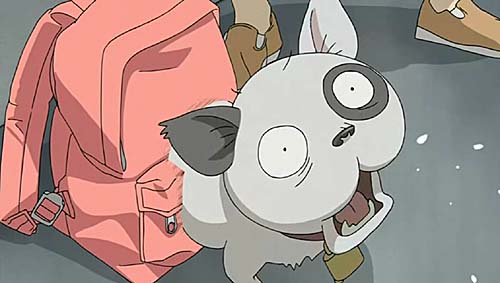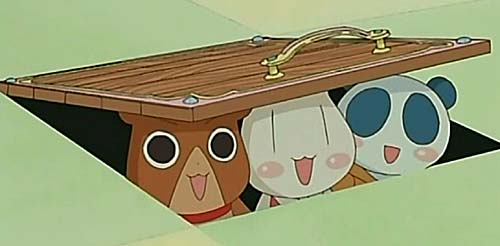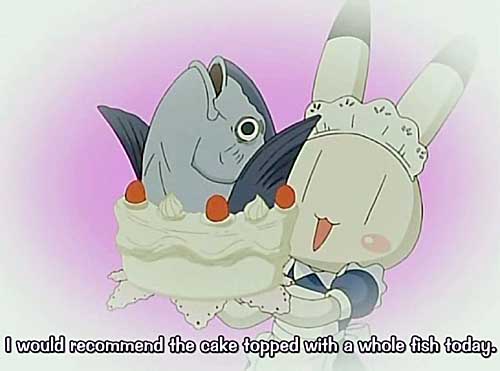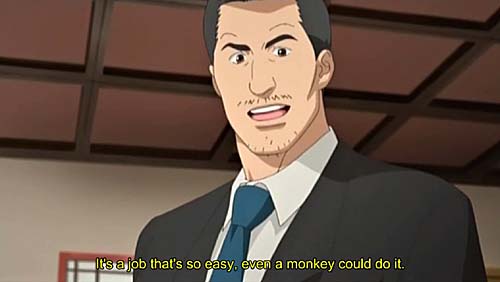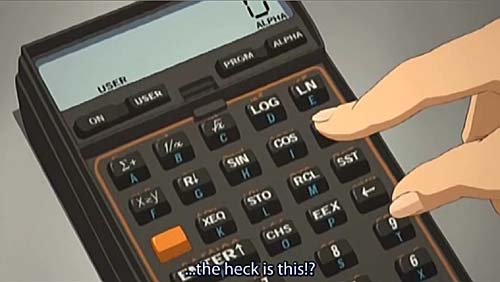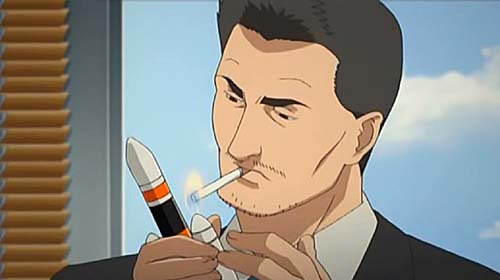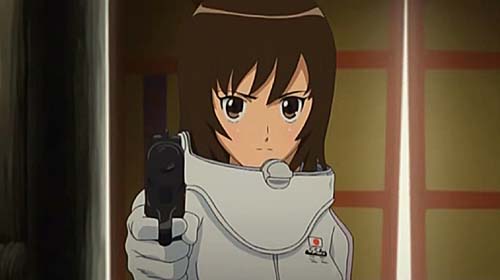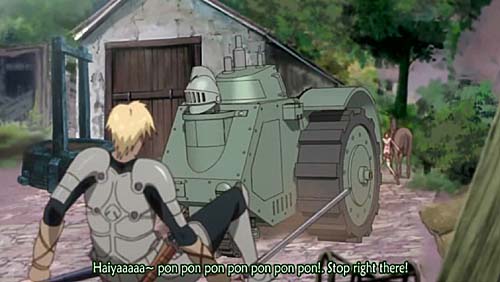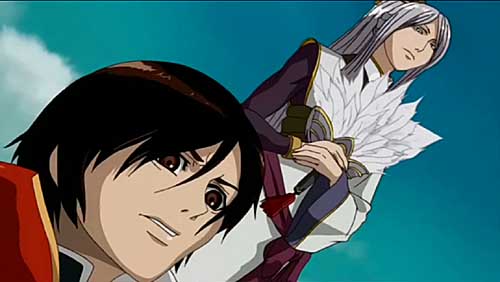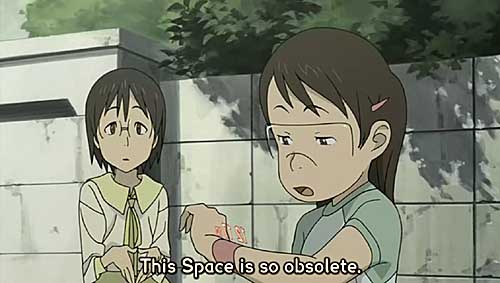
Yuko, newly arrived in Daikoku City with her impulsive little sister Kyoko, loses her dog Densuke when it chases an “illegal” — a sort of computer virus — through a hole in a fence into an “obsolete” cyberspace. Fumie’s business is retrieving lost cyberpets, and Yuko hires her to rescue Densuke. It’s a more difficult job than they anticipate.
Episode one of Denno Coil is the first episode of any of this season’s series that I watched a second time, which automatically makes it the coolest show currently being broadcast. In some respects, it really does seem like Serial Experiments Lain retold for youngsters. Virtual spaces are coincident with the everyday world, and one can open holes to the cyberspaces with “bug” spray. Children have cyberpets that look and behave like real dogs and cats but are visible only to those who wear special glasses. It is possible to pick up and hold these pets, and they can freely pass through the holes into cyberspaces. They don’t like it when you drop a backpack on/through them. Numerous small floating spheres constantly monitor Daikoku City for cybernetic breaches, blasting suspicious areas with a sort of ray.
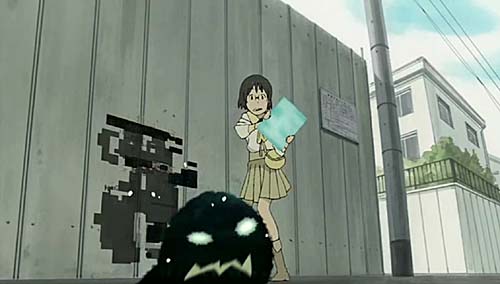
The first episode is very promising. The characters have distinct, non-cliche personalities, and the Denno Coil universe is the most interesting I’ve come across recently. Whether Denno Coil remains cool depends in part in how carefully and consistently director and writer Mitsuo Iso works out the logic of the intersecting real and virtual worlds. It also depends on whether he has twenty-six episodes’ worth of story to tell. The character designs are simplified but serviceable (though the characters who wear visors instead of glasses look like they have pig noses), and the art and the animation are adequate. The background music sounds interesting when I’m aware of it.
